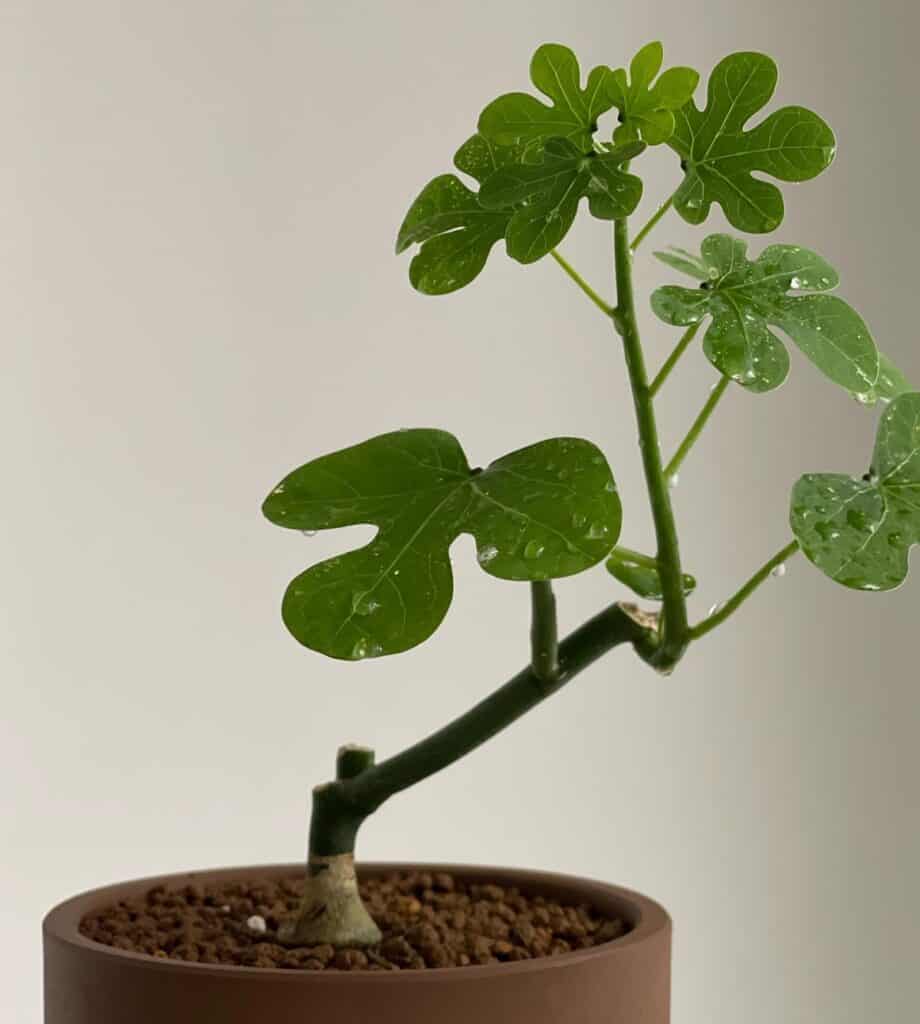Adenia venenata Exposed: Unraveling the Plant’s Strange Growth
Step into the bizarre world of Adenia venenata, a semi-succulent plant that will leave you utterly mesmerized. With its quirky bottle-shaped base and fleshy stems drooping in every direction, this peculiar plant is a true nature’s masterpiece. Get ready to embark on an adventure that will unveil the secrets behind its outlandish growth and captivate you with its oddball charm.

Contents
About Adenia venenata
Adenia venenata, also known as the bottle-stem or bottle-trunk, is a semi-succulent plant native to parts of Africa and Arabia. It boasts a thick, brown caudex (a swollen trunk base) that resembles the bottom of a bottle, from which fleshy stems branch out, often pointing downward. The small, round, green leaves and greenish-yellow flowers bloom on short spikes, adding to the plant’s unique appeal.
Related Post:
1,000 Types of Succulents [With Pictures]
How to Care for Adenia venenata
Light and Lighting
Adenia venenata thrives in bright, direct sunlight, soaking up those rays for at least 5 to 8 hours per day. However, during the hottest hours, it’s best to provide some shading to prevent scorching. If you’re growing your plant indoors, consider investing in a high-quality grow light to mimic the sun’s warmth and intensity.
Watering Wisdom
Like many semi-succulents, Adenia venenata likes its soil to dry out between waterings. Check the top 2-3 inches of soil by poking your finger in, and water only when it feels dry to the touch. During the cooler months, when the plant enters dormancy and sheds most of its leaves, reduce watering to once every 7 days or so.
Soil Secrets
To keep your Adenia venenata happy, it’s crucial to provide a well-draining, gritty soil mix rich in nutrients and slightly acidic. A cactus or succulent potting mix is an excellent choice, but you can also customize it by adding pumice or perlite for improved aeration and drainage.

Fertilizing Finesse
During the growing season (spring and summer), your Adenia venenata will appreciate a dose of succulent-friendly fertilizer every 2-3 weeks. As the cooler months approach and the plant enters dormancy, it’s best to suspend fertilizing until the next growing cycle.
Temperature and Humidity
Adenia venenata loves warm, bright conditions, with an ideal temperature range of around 70°F (21°C). While it can tolerate higher temperatures, it’s not frost-hardy, so be sure to bring it indoors when temperatures dip below 40°F (4°C). As for humidity, this semi-succulent prefers drier conditions.
Pests and Problems
While Adenia venenata isn’t particularly prone to pests, it’s always a good idea to keep an eye out for mealybugs, spider mites, and other common plant pests during the growing season. If you spot any unwanted visitors, a gentle hosing and appropriate treatment should do the trick. Overwatering can lead to fungal or bacterial issues, so be cautious and watch for signs like leaf spots.

Pruning Pointers
Adenia venenata doesn’t require regular pruning, but you can remove any wilted or dying leaves for aesthetic purposes. Remember to wear gloves when pruning, as the plant’s sap can be irritating, and its stems may have prickly thorns.
Potting and Repotting
Repotting your Adenia venenata isn’t a frequent task, but it may be necessary every 2-3 years or when the roots start poking out of the drainage holes. Spring is the best time for repotting, as the plant will be actively growing.
Propagating Adenia venenata
Adenia venenata can be propagated from seeds or herbaceous stem cuttings, providing you with ample opportunities to multiply this peculiar plant.
For seed propagation, sow the seeds during the growing season, but be patient – these slow growers may take several years to establish fully.
If you opt for stem cuttings, follow these simple steps:
- Take a healthy stem cutting, ensuring it’s herbaceous (non-woody)
- Allow the cut surface to dry thoroughly before proceeding
- Once the cutting has calloused over, dip the base in a rooting hormone
- Plant the cutting in a well-draining rooting medium
- Keep the soil moist but not waterlogged
- Once roots emerge, transplant into a potting mix and care for as usual
Whether you choose seeds or cuttings, propagating Adenia venenata is a rewarding experience that will allow you to share this bizarre botanical wonder with fellow plant enthusiasts.
Remember, when working with stem cuttings, it’s crucial to let the cut surface dry completely before planting. This callousing process helps prevent rot and increases the chances of successful rooting.
